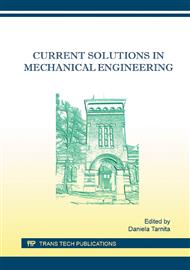p.361
p.367
p.373
p.377
p.383
p.389
p.396
p.405
p.411
Design and Implementation of a Neural Network Applied to the Maximum Power Point Tracking of a Solar Panel
Abstract:
This paper shows the design and implementation of a neural network using back propagation method in order to perform the tracking of the maximum power point of a solar panel; this can be achieved by the use of the predictive ability of the network which uses light sensors to perform angular movement of the panel to find the optimum position. Tests were performed both in artificial and real environments; the network tracking sensitivity was tested in the artificial environment and it gave a result of less than 8 degrees of error, on the other hand in terms of voltage an improvement of more than 25% was found on the tracking configuration against an static configuration. As for the real environment testing, the tracking achieved to find the value of maximum power with a difference smaller than 4% of the maximum power measurement obtained.
Info:
Periodical:
Pages:
383-388
Citation:
Online since:
January 2016
Price:
Сopyright:
© 2016 Trans Tech Publications Ltd. All Rights Reserved
Share:
Citation:


